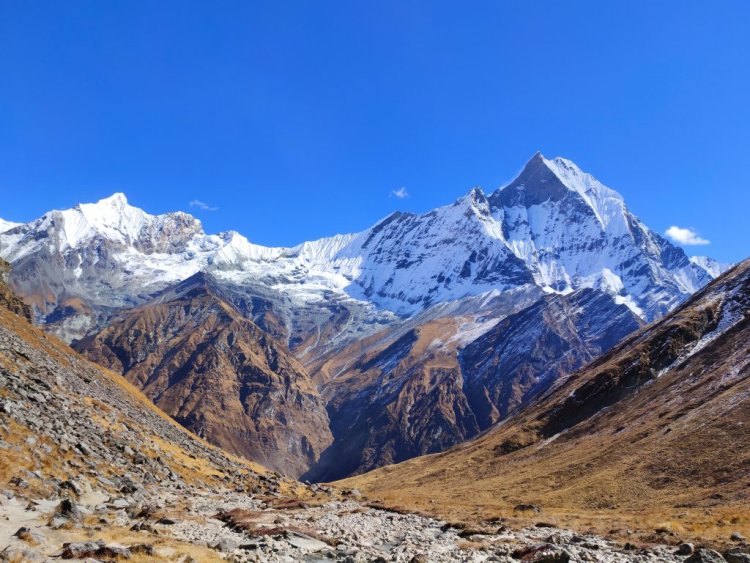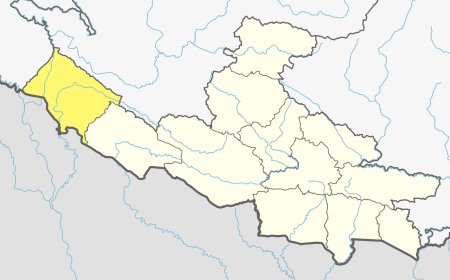Mount Annapurna: The Majesty of Nepal's Himalayas
In the heart of Nepal's Himalayas stands Mount Annapurna, reaching an impressive 8,091 meters (26,545 feet). Named after the goddess of abundance, Annapurna is both a cultural symbol and a natural wonder.

Introduction
Nestled in the heart of the breathtaking Himalayan mountain range, Mount Annapurna stands as a symbol of Nepal's natural beauty and the allure of high-altitude adventure. With its summit reaching a breathtaking 8,091 meters (26,545 feet) above sea level, it ranks as the 10th highest peak in the world. But Mount Annapurna is more than just a lofty summit; it's a symbol of the allure of high-altitude adventure, a testament to human determination, and a sanctuary for biodiversity and culture.
Geological Wonders
The Annapurna Massif, of which Mount Annapurna is a part, is situated in the north-central region of Nepal. The name "Annapurna" finds its roots in Sanskrit, meaning "Goddess of the Harvests." This awe-inspiring mountain range is a geological marvel, encompassing a striking diversity of landscapes. From subtropical forests and terraced fields that grace its foothills to the towering glaciers and snow-covered peaks that dominate its higher reaches, Annapurna is a testament to the raw power of geological forces.
Historical Ascents and Challenges
Scaling Mount Annapurna is no small feat. It has earned a well-deserved reputation as one of the most challenging mountains on Earth. Its towering heights, unpredictable weather patterns, and technical difficulties have thwarted many attempts. It wasn't until 1950 that a French expedition, led by Maurice Herzog and Louis Lachenal, achieved the first successful ascent of Annapurna. This groundbreaking achievement marked a significant milestone in the history of mountaineering and forever etched Annapurna's name in the annals of adventure.
Over the years, Annapurna has witnessed legendary expeditions and fearless climbers, each leaving their mark on the mountain's storied history. Its challenges are what continue to draw experienced climbers from around the globe.
Trekking and Tourism
While summiting Mount Annapurna is a goal for a select few, the region surrounding the mountain offers a wealth of trekking opportunities for adventurers of various skill levels. The Annapurna Circuit Trek, one of Nepal's most famous trekking routes, takes intrepid explorers through lush forests, and picturesque villages, and offers panoramic vistas of the Annapurna Massif. Trekkers have the chance to immerse themselves in nature, culture, and local hospitality.
Biodiversity and Conservation
The Annapurna region is a sanctuary for biodiversity. The lower slopes teem with life, including rhododendrons, orchids, elusive snow leopards, and the charming red panda. The region's environmental significance led to its designation as the Annapurna Conservation Area, Nepal's largest protected area, dedicated to preserving its unique natural heritage.
However, this ecological haven faces its share of challenges, notably climate change. Melting glaciers and unpredictable weather patterns threaten the delicate balance of the ecosystem, impacting both wildlife and the livelihoods of local communities.
Cultural Riches
Beyond its natural beauty, the Annapurna region is a cultural tapestry woven with the threads of diverse ethnic groups. Gurungs, Magars, Thakalis, Tibetans, and more call these hills home, each contributing their traditions, languages, and architectural styles to the rich cultural fabric of the region. For trekkers, the trail offers not just breathtaking scenery but also opportunities to connect with local cultures, stay in traditional teahouses, and witness ancient customs.
Challenges and Future Conservation
Mount Annapurna and its surrounding region face significant challenges in the 21st century. Climate change has accelerated the melting of glaciers, disrupted weather patterns, and heightened the risks for both adventurers and local communities. In response, ongoing conservation efforts strive to protect the environment and cultural heritage while promoting sustainable tourism practices that balance the thrill of adventure with the need for preservation.
Legacy and Inspiration
Mount Annapurna is more than a geographical feature; it has seeped into the very soul of Nepali culture. It stands as a symbol of courage, determination, and the human spirit's indomitable will. Its stories inspire generations of adventurers, urging them to seek out their own personal summits. Mount Annapurna's allure is eternal, an ever-present reminder of the majestic beauty and boundless adventure that awaits those who dare to explore its heights.
Conclusion
In conclusion, Mount Annapurna is not just a mountain; it's a testament to the majesty of nature, the resilience of human ambition, and the importance of conservation in our changing world. It beckons both the intrepid climber and the nature-loving trekker, offering them an experience that encompasses the physical, cultural, and spiritual dimensions of adventure.
What's Your Reaction?




































































































